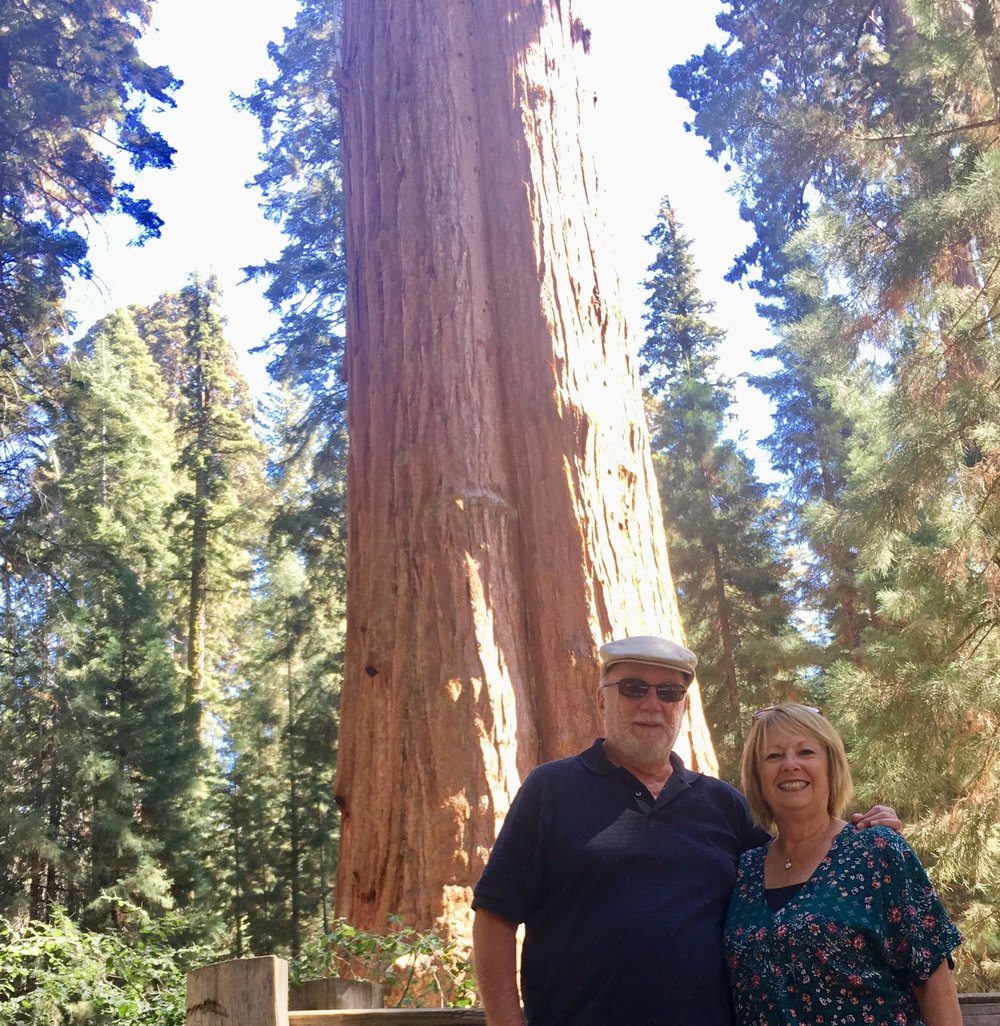
They might be giants
September 30, 2019
It’s a humbling experience to stand in the shadow of these giant trees
The giant Sequoia known as General Sherman that stands in California’s Sequoia National Park is more than 2000 years old. It is 1000 years younger than the oldest known Sequoia. Interestingly, these forest giants require wildfires in order to germinate their seeds and grow new trees. In other words, these living trees have been around for at least 3000 years, and have survived through the life giving natural occurrence of forest fires. Today, thanks to the human encroachment of creeping suburbia, forest fires are suddenly now a scourge that have to be dealt with – to read between the lines of the lumber industry – by clearcutting, of course.
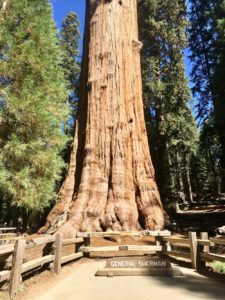
At 2000 years old. It’s among the younger of these old timers
The Forest Service purposely sets fires in the park. They’re called “prescribed,” and are designed to aid in the germination of Sequoia seeds. Many of these ancient trees bear the scorched scars and blackened bark that is the cycle of life in these woods. It’s a fascinating irony to consider that these giant trees would not survive were there no fires to kindle new growth.
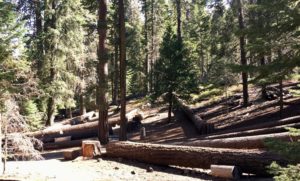
The cycle of life requires periodic forest fires for new Sequoia seeds to germinate
General Sherman is the largest known Sequoia, not because of its height, but because of its girth. The top of this 225-foot tree is dead, but its base continues to grow the equivalent wood volume of a new tree every year. The circumference of General Sherman is currently measured at 109 feet, which if straightened out on a football field, would stretch from the goalline to about the 35-yard line. These are monster trees. It is believed that if General Sherman was cut up into 12-inch planks, they would stretch 100 miles. (Easy loggers, that ain’t gonna happen. Tree huggers have this one covered, though it might take a football team’s worth arm-in-arm stretch to give Sherman a proper hug.)
I became enamoured of these giants as a kid, when I saw a Disney special that showed people driving through a tunnel carved out of the trunk of one of them. Carol sadly reported that that famous Sequoia toppled over in 1969. We did find a picture of one that had fallen across a road that they had carved a tunnel through, but somehow that’s not the same thing.
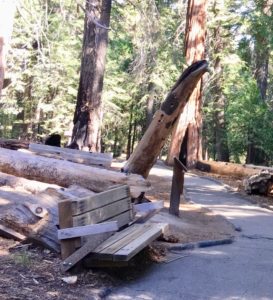
“There but for the grace of God go I”
Sequoias share the forest with slimmer and taller Redwoods and Ponderosa pines, and I wonder if there’s any tree-shaming going on among the various species. It wouldn’t surprise me. There’s an oafish, Shreklike quality to these massive trees that could make them the butt of jokes among their more slender fellow conifers. With their great drooping limbs and bare, graying tops, there’s a sad, “Brooding Norwegian” quality about these great trees that does make you want to reach out and give them a sympathetic pat at least.
We happened upon a thick wooden bench placed in front of one of these forest beasts. “You can sit here and quietly contemplate these giants,” Carol said to me.
“And the tree can ruefully contemplate the bench and think, ‘there but for the grace of God go I.'”
And for about a 100 miles worth of those benches to be sure.

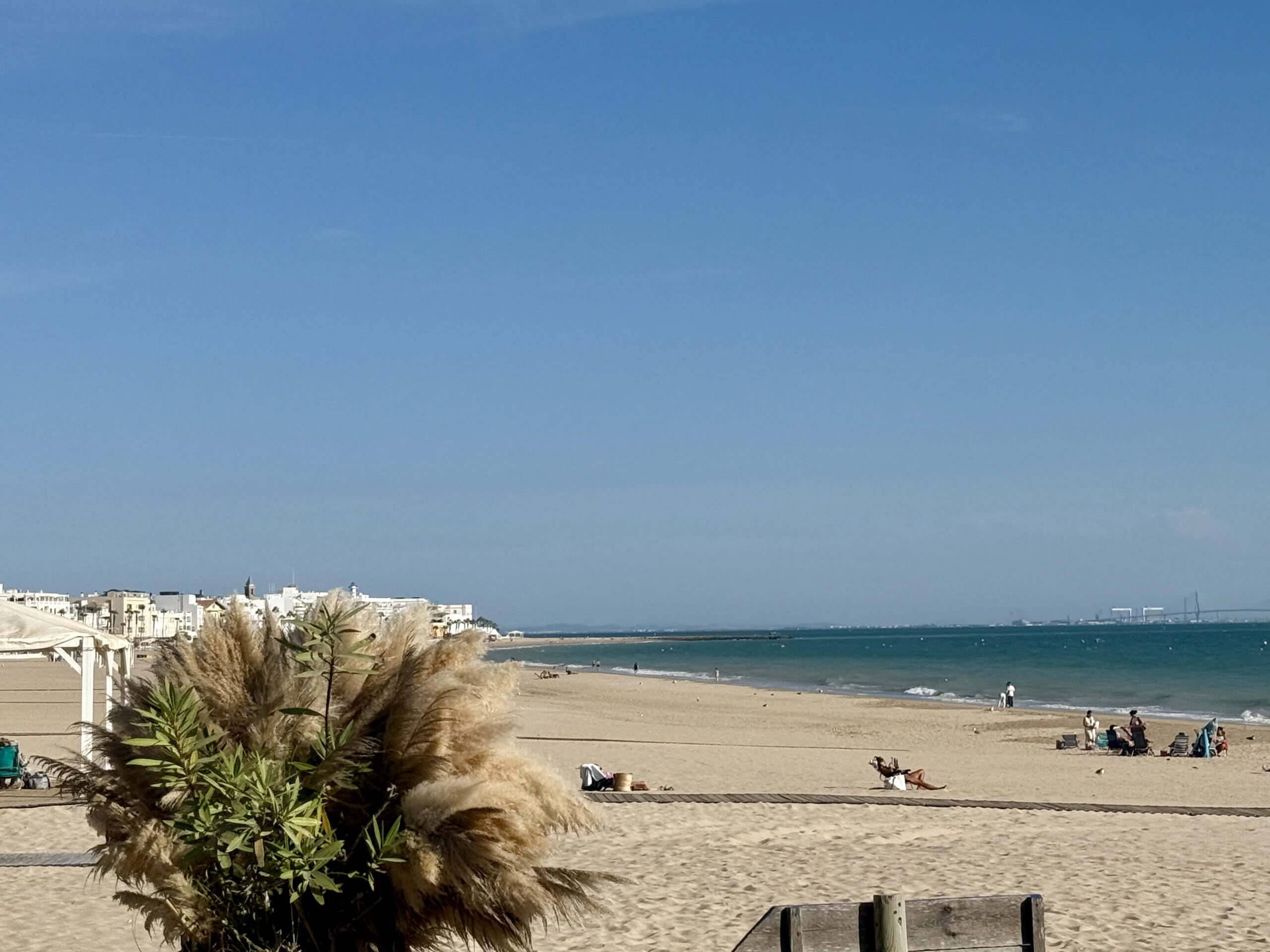

Be the first to comment